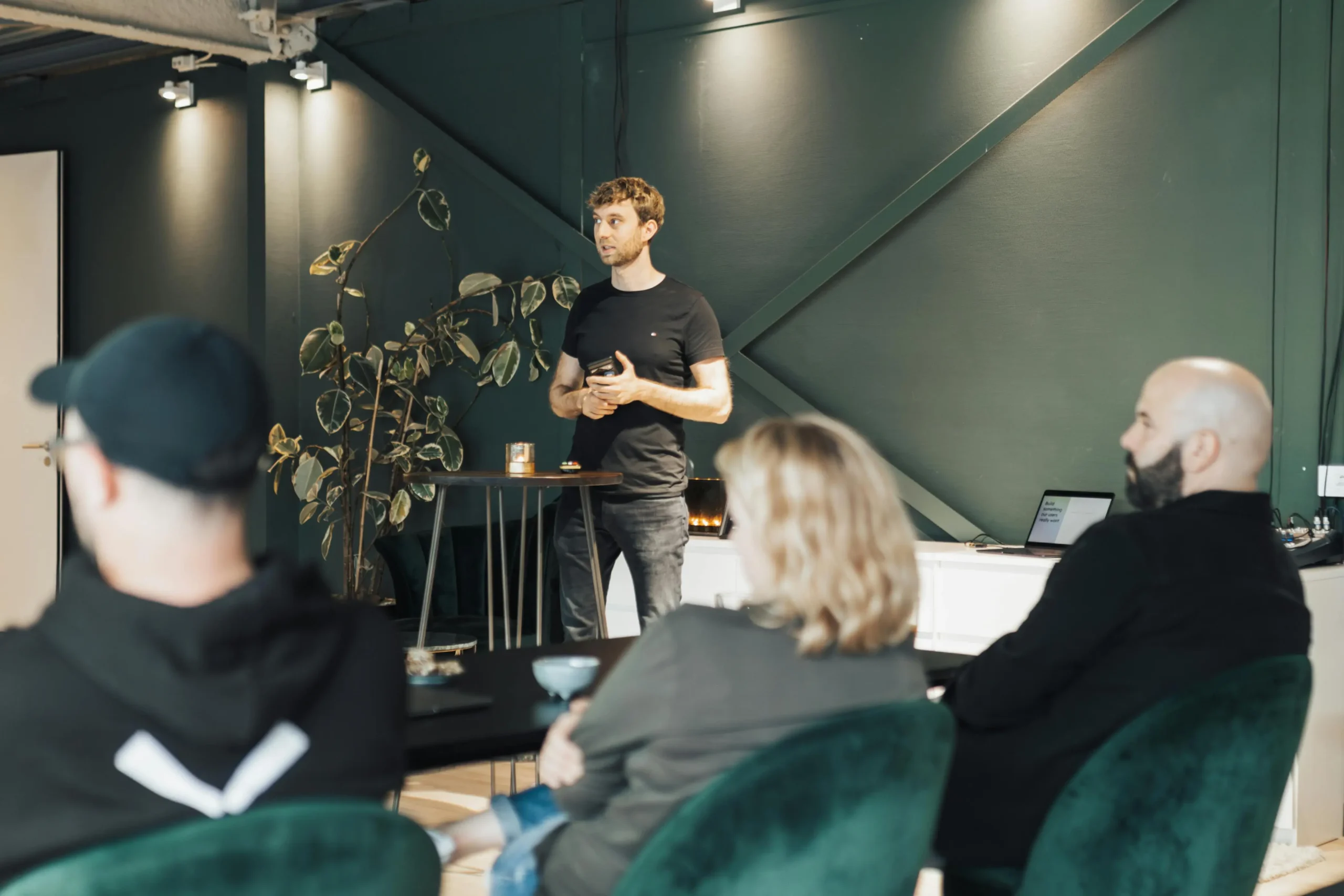At a glance:
- Brand consistency builds trust and creates a good event experience.
- Creativity keeps events fresh, engaging, and memorable, helping brands stand out through storytelling, immersive design, and surprising details.
- The right balance comes with clear brand guidelines, using the brand as a creative springboard, and aligning design decisions with the event’s purpose.
- Modular design and cross-team collaboration enable flexibility without losing brand coherence, especially for multi-location activations or recurring events.
Anyone who’s ever designed a brand event knows the tension: You want it to be creative and exciting, but you also need to stay firmly within brand lines. Push too far creatively, and you risk confusing your audience. Play it too safe, and your event will be boring and fade into the background.
The key is finding the right balance. You can bring fresh, original ideas to life while still expressing the brand clearly and consistently. When done well, the event seamlessly reflects your brand identity, one that also captures attention and tells a story.
So, if you are someone looking to organise a creative corporate event while focusing on the brand, you have come to the right place. As one of the leading event management companies in Australia, we will help you understand how to balance creativity with brand consistency in event design.
Why Brand Consistency Matters in Event Design
When we say brand consistency, we often think of using the right colours and logos. However, maintaining brand consistency in an event has something to do with reinforcing what your brand stands for across every element of the event, from the first event invitation to the final farewell. So, here is why they matter in any event design.
- Builds trust and brand recognition through elements of your brand like logo, colours, tone of voice, or style.
- Ensures all visual and experiential elements reflect the brand story.
- Attendees can quickly identify official event materials and find information more efficiently.
- Delivers a seamless experience across every guest touchpoint. This creates a more immersive and coherent experience.
Why Creativity Should Not Be Missed in Your Event Design
Brand consistency is very important in any event design, and there is no doubt about that. However, when brand consistency is maintained without creativity, the entire event experience can become dull and uninspiring. As a result, integrating creativity is very important for any event. Here is why creativity should not be missed in your event design.
- Creative event keeps attendees engaged with fresh ideas and lead to deeper connections.
- Creativity elevates the event experience through immersive design that captivates attendees, encourages interaction, and leaves a lasting impression.
- It creates a platform that supports storytelling, surprise moments, and unique themes for any event, sparking sharing and encouraging attendee engagement at future events.
Strategies to Balance Creativity and Brand Consistency in Event Design
There is no denying that the perfect combination of creativity and brand consistency is needed. But, how do you strike the right balance between creative freedom and staying on-brand? Here are several proven event branding strategies for businesses:
Start with Clear Brand Guidelines
As simple as it might sound, you should start the brand event design process by preparing clear brand guidelines. To do this, you need to identify the brand’s core identity. This means you need to understand tone of voice, key messaging, brand values, and even how the brand is perceived in different markets before brainstorming creative concepts. This way, your event can stay relevant and engaging to the attendees.
Then, you need to share the guidelines with all the parties involved in the event management process, such as the event managers, decorators, and technicians. This is very important because when everyone understands the boundaries and vision from the outset, they can make more aligned and effective creative decisions.
Think of these guidelines as the framework for combining event design with creativity. For instance, you can conduct brand immersion sessions with all stakeholders to ensure alignment and foster a cohesive creative direction.
Use Brand as a Creative Foundation
A brand inspires all of the event themes. However, only the strongest event concepts are built from the brand. So, you can use the brand’s story, history, or mission as a stepping stone for your creative themes. There’s a big difference between simply applying brand colours to decor and designing an entire experience that embodies the brand’s essence.
For example, a tech company that values innovation could inspire a futuristic and interactive environment for the event theme. On the other hand, a sustainability-focused brand might call for eco-friendly materials and nature-inspired design motifs.
However, this type of planning and execution is easier said than done. To achieve this, planners should treat the brand as a foundation rather than a finishing touch. By allowing the brand to serve as a starting point for the program, you ensure that the brand theme is not random and that the event design resonates with the brand.
Prioritise Purpose-Driven Design
Every design element in the event should be intentional and not forced. A few questions can help ensure that the design elements are ready to go for the event. These questions can be about the goal of the event or the expectations. For instance, you can ask yourself: What is this event trying to achieve? Is it meant to drive product awareness?
After you know the end goal, you can let the event’s primary objective guide the creative decisions. If the purpose is education, then immersive learning stations or hands-on workshops may serve the audience better than a purely aesthetic spectacle. If the goal is buzz and engagement, dramatic reveals, dynamic photo ops, or live entertainment might take centre stage.
Purpose-first planning ensures that creativity serves the brand’s goals and not just for the sake of being “different.”
Read More: How to Set Clear Objectives for Corporate Events
Leverage Modular Elements
One of the best ways to balance flexibility with consistency is to design modular elements. This way, you can customise and use the design elements that pertain to each event while staying visually and structurally aligned with your brand.
Modular elements are components that can be combined, interchanged, or adapted to create a wider variety of products or systems. You can make the modular elements based on your business and brand. That said, here are some of the common elements that you can consider.
The first one is event props, customisable LED displays, or projection-mapped backdrops that can be updated per theme. Moreover, there are options for branded furniture or set pieces that adapt to various layouts. Finally, event kits or assets that travel well across locations but retain the same visual language can also be a useful design element.
Modularity enables creativity within clear parameters. It’s especially useful for recurring brand activations or roadshows where consistency matters across multiple cities or markets. So, if you need to organise similar events, consider investing in modular elements.
Collaborate Across Teams
Last but not least, you will need to collaborate on the event design across the team. Creative alignment thrives on cross-functional collaboration. So, bring in your brand managers, marketing leads, event planners, and creative designers early in the process. They all can add value rather than just approvals at the end. When all teams contribute from the outset, innovative solutions are better aligned, more strategic, and more impactful.
This collaborative approach also allows for consistency across every touchpoint, from invitations and digital assets to signage and post-event communications. It ensures that no matter how bold or innovative the idea, it still reflects a cohesive brand narrative.
Here is a pro tip. Consider appointing a brand guardian within the event team. Ensure that they are someone who can review all creative outputs through the lens of brand integrity.
The bottom line is that balancing creativity with brand consistency is a strategic necessity. Brand consistency serves as the anchor that ensures your event is recognisable and trustworthy while aligning with your broader Experiential Marketing Activities. At the same time, creativity breathes life into that structure, making your event memorable, engaging, and emotionally resonant.
At Peanut Productions, we specialise in strategic event design that blends creative flair with brand integrity. If you need help balancing the creativity and brand consistency in event design, contact us today to get started!


